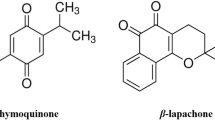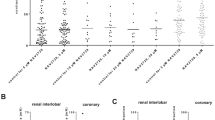Abstract
Soluble guanylyl cyclase (sGC), phosphodiesterase type 5 (PDE5), and guanosine 3′,5′-cyclic monophosphate (cGMP)-dependent protein kinase (PKG) are all dimeric. The present study was to determine the role of their dimeric status in nitric oxide-induced vasodilatation. In isolated porcine coronary arteries, after 20 h incubation with serum-free medium, serum-containing medium, or phosphate-buffered saline solution, the protein levels of the dimers of sGC, PDE5, and PKG were diminished while the monomer levels remained unchanged, associated with reduced cGMP elevation in response to DETA NONOate and decreased PDE5 activity; the activity of PKG was not significantly altered. DETA NONOate caused a greater relaxation in arteries incubated for 20 vs. 2 h. The relaxant response was largely abolished by 1H-[1, 2, 4]oxadiazolo[4,3-a]quinoxalin-1-one, an sGC inhibitor. Zaprinast, a PDE5 inhibitor, had no effect on relaxation caused by DETA NONOate of arteries incubated for 20 h but augmented the response incubated for 2 h. A greater relaxation to 8-bromo-guanosine 3′5′-cyclic monophosphate occurred in arteries incubated for 20 than for 2 h. The protein level of the dimers but not monomers of PDE5 was reduced by dithiothreitol and unaffected by hydrogen peroxide, accompanied with decreased PDE5 activity and reduced response to DETA NONOate. These results demonstrate that the dimeric but not monomeric status of sGC and PDE5 of coronary arteries are closely related to their activities. The preserved vasodilator response after 20 h incubation may result in part from a synchronous reduction of the dimer levels of sGC and PDE5 as well as an augmented response to cGMP.









Similar content being viewed by others
References
Batchelor AM, Bartus K, Reynell C, Constantinou S, Halvey EJ, Held KF, Dostmann WR, Vernon J, Garthwaite J (2010) Exquisite sensitivity to subsecond, picomolar nitric oxide transients conferred on cells by guanylyl cyclase-coupled receptors. Proc Natl Acad Sci U S A 107:22060–22065
Burgoyne JR, Madhani M, Cuello F, Charles RL, Brennan JP, Schröder E, Browning DD, Eaton P (2007) Cysteine redox sensor in PKGIα enables oxidant-induced activation. Science 317:1393–1397
Cleland WW (1964) Dithiothreitol, a new protective reagent for SH groups. Biochemistry 3:480–482
Dey NB, Busch JL, Francis SH, Corbin JD, Lincoln TM (2009) Cyclic GMP specifically suppresses type-Iα cGMP-dependent protein kinase expression by ubiquitination. Cell Signal 21:859–866
Dou D, Zheng X, Liu J, Xu X, Ye L, Gao Y (2012) Hydrogen peroxide enhances vasodilatation by increasing dimerization of cGMP-dependent protein kinase type-Iα. Circ J 76:1792–1798
Dou D, Zheng X, Qin X, Qi H, Liu L, Raj JU, Gao Y (2008) Role of PKG in development of nitroglycerin tolerance of porcine coronary arteries. Br J Pharmacol 153:497–507
Dou D, Zheng X, Ying L, Ye L, Gao Y (2013) Sulfhydryl-dependent dimerization and cGMP-mediated vasodilatation. J Cardiovasc Pharmacol 62:1–5
Fink TL, Francis SH, Beasley A, Grimes KA, Corbin JD (1999) Expression of an active, monomeric catalytic domain of the cGMP-binding cGMP-specific phosphodiesterase (PDE5). J Biol Chem 274:34613–34620
Francis SH, Blount MA, Corbin JD (2011) Mammalian cyclic nucleotide phosphodiesterases: molecular mechanisms and physiological functions. Physiol Rev 91:651–690
Friebe A, Koesling D (2009) The function of NO-sensitive guanylyl cyclase: what we can learn from genetic mouse models. Nitric Oxide 21:149–156
Gao Y (2010) The multiple actions of NO. Pflügers Arch Eur J Physiol 459:829–839
Gao Y, Dhanakoti S, Trevino EM, Wang X, Sander FC, Portuga AD, Raj JU (2004) Role of cGMP-dependent protein kinase in development of tolerance to nitric oxide in pulmonary veins of newborn lambs. Am J Physiol 286:L786–L792
Garthwaite J, Southam E, Boulton CL, Nielsen EB, Schmidt K, Mayer B (1995) Potent and selective inhibition of nitric oxide-sensitive guanylyl cyclase by 1H-[1,2,4]oxadiazolo4,3-a]quinoxalin-1-one. Mol Pharmacol 48:184–188
Harteneck C, Koesling D, Söling A, Schultz G, Böhme E (1990) Expression of soluble guanylyl cyclase. Catalytic activity requires two enzyme subunits. FEBS Lett 272:221–223
Hofmann F, Bernhard D, Lukowski R, Weinmeister P (2009) cGMP regulated protein kinases (cGK). Handb Exp Pharmacol 191:137–162
Hussain MB, Hobbs AJ, MacAllister RJ (1999) Autoregulation of nitric oxide-soluble guanylate cyclase-cyclic GMP signalling in mouse thoracic aorta. Br J Pharmacol 128:1082–1088
Hussain MB, MacAllister RJ, Hobbs AJ (2001) Reciprocal regulation of cGMP-mediated vasorelaxation by soluble and particulate guanylate cyclases. Am J Physiol Heart Circ Physiol 280:H1151–H1159
Keefer LK, Nims RW, Davies KM (1996) “NONOates” (1-substituted diazen-1-ium-1,2-diolates) as nitric oxide donors: convenient nitric oxide dosage forms. Methods Enzymol 268:281–293
Keravis T, Lugnier C (2012) Cyclic nucleotide phosphodiesterase (PDE) isozymes as targets of the intracellular signaling network: benefits of PDE inhibitors in various diseases and perspectives for future therapeutic developments. Br J Pharmacol 165:1288–1305
Koesling D, Mullershausen F, Lange A, Friebe A, Mergia E, Wagner C, Russwurm M (2005) Negative feedback in NO/cGMP signalling. Biochem Soc Trans 33:1119–1122
Ma H, He Q, Dou D, Zheng X, Ying L, Wu Y, Raj JU, Gao Y (2010) Increased degradation of MYPT1 contributes to the development of tolerance to nitric oxide in porcine pulmonary artery. Am J Physiol Lung Cell Mol Physiol 299:L117–L123
Madhani M, Scotland RS, MacAllister RJ, Hobbs AJ (2003) Vascular natriuretic peptide receptor-linked particulate guanylate cyclases are modulated by nitric oxide-cyclic GMP signalling. Br J Pharmacol 139:1289–1296
Mergia E, Friebe A, Dangel O, Russwurm M, Koesling D (2006) Spare guanylyl cyclase NO receptors ensure high NO sensitivity in the vascular system. J Clin Invest 116:1731–1737
Meyer RBJ, Miller JP (1974) Analogs of cyclic AMP and cyclic GMP: general methods of synthesis and the relationship of structure to enzymic activity. Life Sci 14:1019–1040
Mullershausen F, Russwurm M, Thompson WJ, Liu L, Koesling D, Friebe A (2001) Rapid nitric oxide-induced desensitization of the cGMP response is caused by increased activity of phosphodiesterase type 5 paralleled by phosphorylation of the enzyme. J Cell Biol 155:271–278
Mullershausen F, Friebe A, Feil R, Thompson WJ, Hofmann F, Koesling D (2003) Direct activation of PDE5 by cGMP: long-term effects within NO/cGMP signaling. J Cell Biol 160:719–727
Mullershausen F, Russwurm M, Koesling D, Friebe A (2004) In vivo reconstitution of the negative feedback in nitric oxide/cGMP signaling: role of phosphodiesterase type 5 phosphorylation. Mol Biol Cell 15:4023–4030
Nagahara N (2011) Intermolecular disulfide bond to modulate protein function as a redox-sensing switch. Amino Acids 41:59–72
Qi H, Zheng X, Qin X, Dou D, Xu H, Raj JU, Gao Y (2007) PKG regulates the basal tension and plays a major role in nitrovasodilator-induced relaxation of porcine coronary veins. Br J Pharmacol 152:1060–1069
Qin X, Zheng X, Qi H, Dou D, Raj JU, Gao Y (2007) cGMP-dependent protein kinase in regulation of basal tone and in nitroglycerin and nitric oxide induced relaxation in porcine coronary artery. Pflügers Arch Eur J Physiol 454:913–923
Ring A, Mullershausen F, Goertz O, Koesling D, Muhr G, Steinau HU, Steinstraesser L, Langer S (2010) Exogenous nitric oxide donation causes desensitization of arteriolar relaxing activity in vivo: an intravital analysis in mice. J Surg Res 164:169–174
Sayed N, Baskaran P, Ma X, van den Akker F, Beuve A (2007) Desensitization of soluble guanylyl cyclase, the NO receptor, by S-nitrosylation. Proc Natl Acad Sci U S A 104:12312–12317
Smolenski A, Bachmann C, Reinhard K, Hönig-Liedl P, Jarchau T, Hoschuetzky H, Walter U (1998) Analysis and regulation of vasodilator-stimulated phosphoprotein serine 239 phosphorylation in vitro and in intact cells using a phosphospecific monoclonal antibody. J Biol Chem 273:20029–20035
Somlyo AP, Somlyo AV (2003) Ca2+ sensitivity of smooth muscle and nonmuscle myosin II: modulated by G proteins, kinases, and myosin phosphatase. Physiol Rev 83:1325–1358
Vanhoutte PM (1989) Endothelium and control of vascular function. State of the art lecture. Hypertension 13:658–667
Winterbourn CC, Hampton MB (2008) Thiol chemistry and specificity in redox signaling. Free Radic Biol Med 45:549–561
Ye L, Liu J, Liu H, Ying L, Dou D, Chen Z, Xu X, Raj JU, Gao Y (2013) Sulfhydryl-dependent dimerization of soluble guanylyl cyclase modulates relaxation of porcine pulmonary vessels to nitric oxide. Pflügers Arch Eur J Physiol 465:333–341
Ying L, Xu X, Liu J, Dou D, Yu X, Ye L, He Q, Gao Y (2012) Heterogeneity in relaxation of different sized porcine coronary arteries to nitrovasodilators: role of PKG and MYPT1. Pflügers Arch Eur J Physiol 463:257–268
Zheng X, Ying L, Liu J, Dou D, He Q, Leung SWS, Man RYK, Vanhoutte PM, Gao Y (2011) Role of sulfhydryl-dependent dimerization of soluble guanylyl cyclase in relaxation of porcine coronary artery to nitric oxide. Cardiovasc Res 90:565–572
Acknowledgments
This work was supported in part by the National Natural Science Foundation of China grants 81270341.
Conflict of Interest
The authors state no conflict of interest.
Author information
Authors and Affiliations
Corresponding author
Rights and permissions
About this article
Cite this article
Liu, J., Chen, Z., Ye, L. et al. Preservation of nitric oxide-induced relaxation of porcine coronary artery: roles of the dimers of soluble guanylyl cyclase, phosphodiesterase type 5, and cGMP-dependent protein kinase. Pflugers Arch - Eur J Physiol 466, 1999–2008 (2014). https://doi.org/10.1007/s00424-014-1441-2
Received:
Revised:
Accepted:
Published:
Issue Date:
DOI: https://doi.org/10.1007/s00424-014-1441-2




